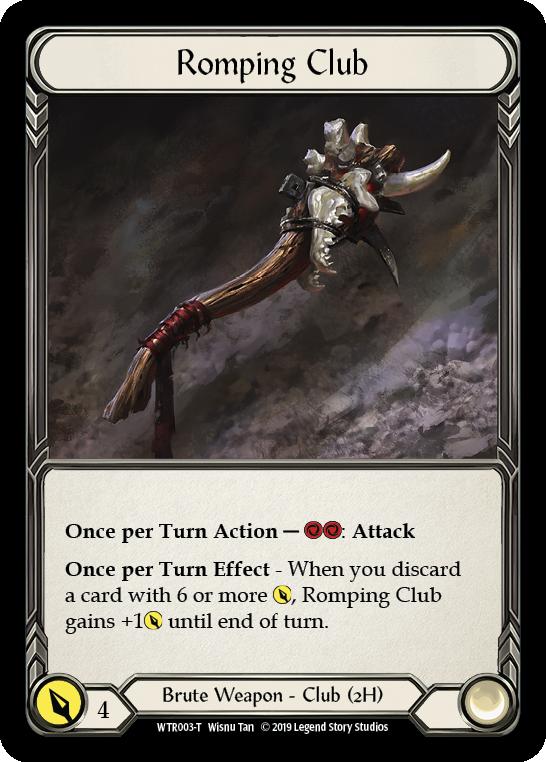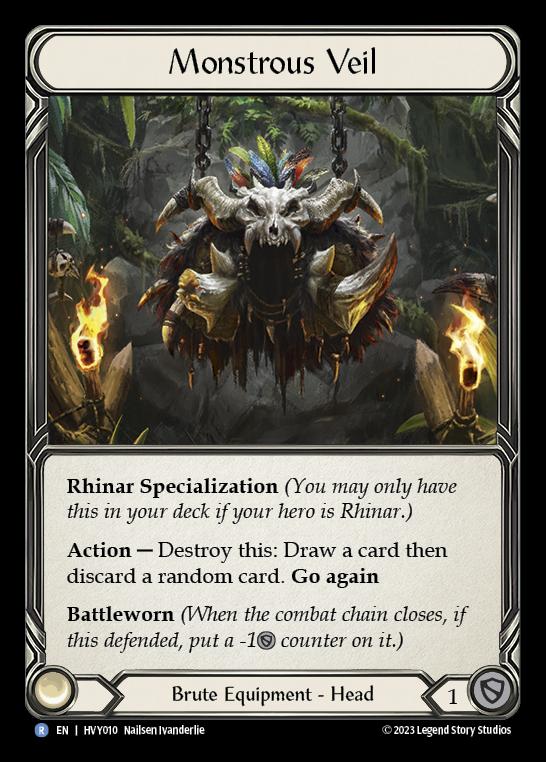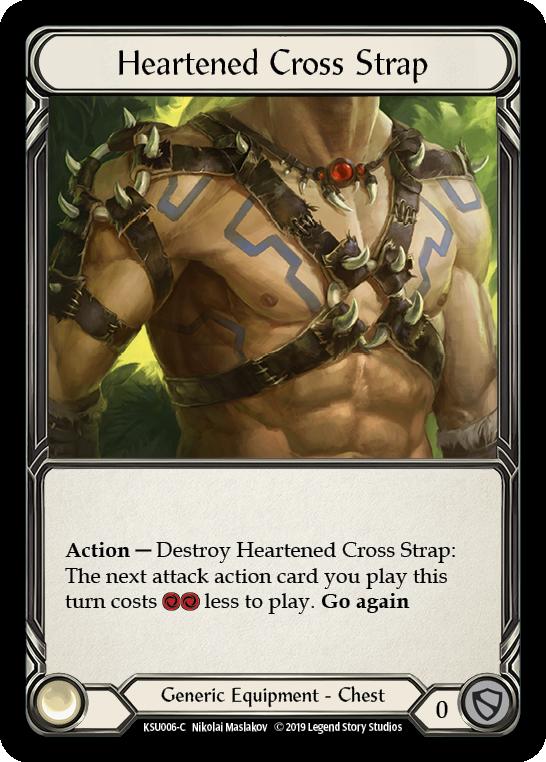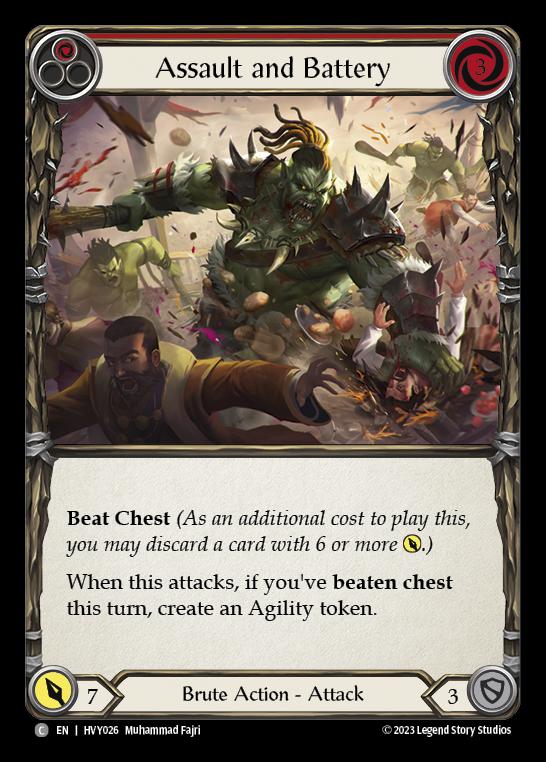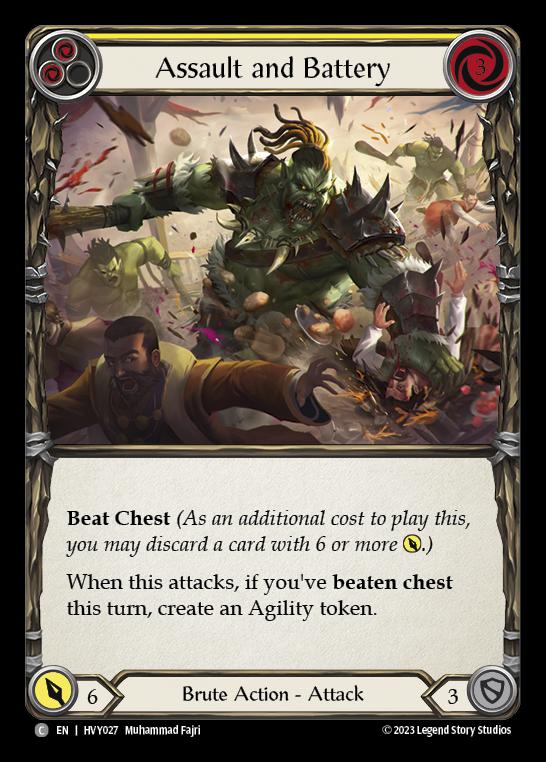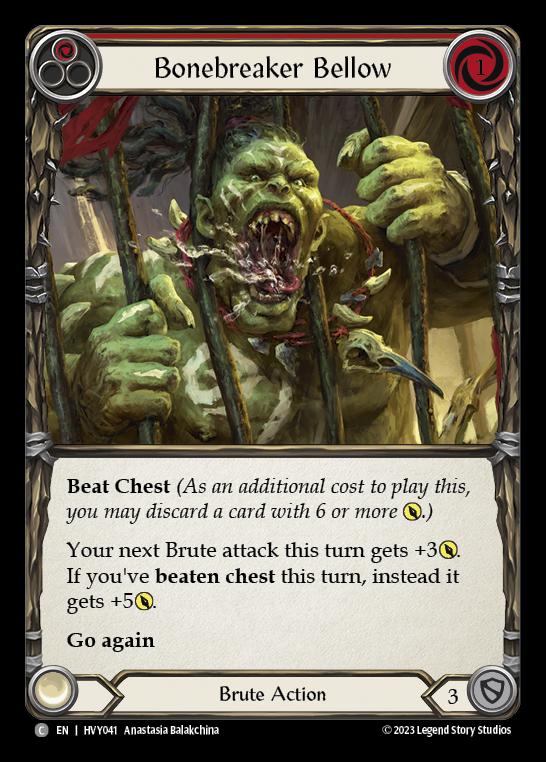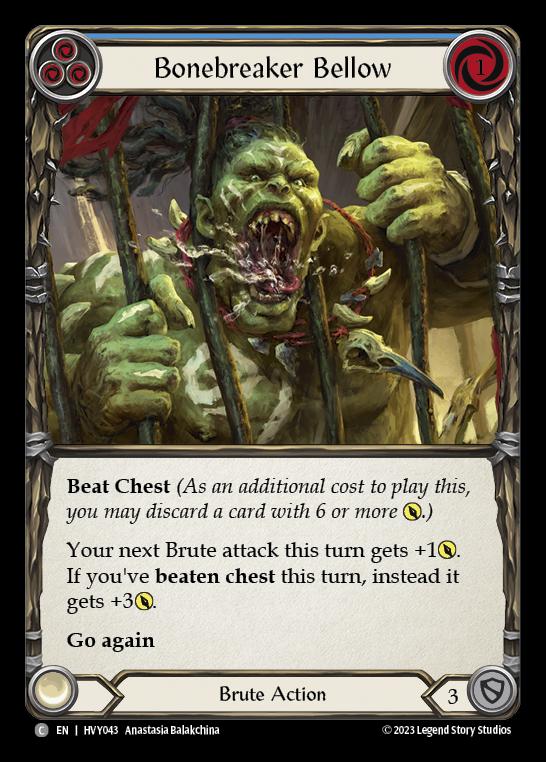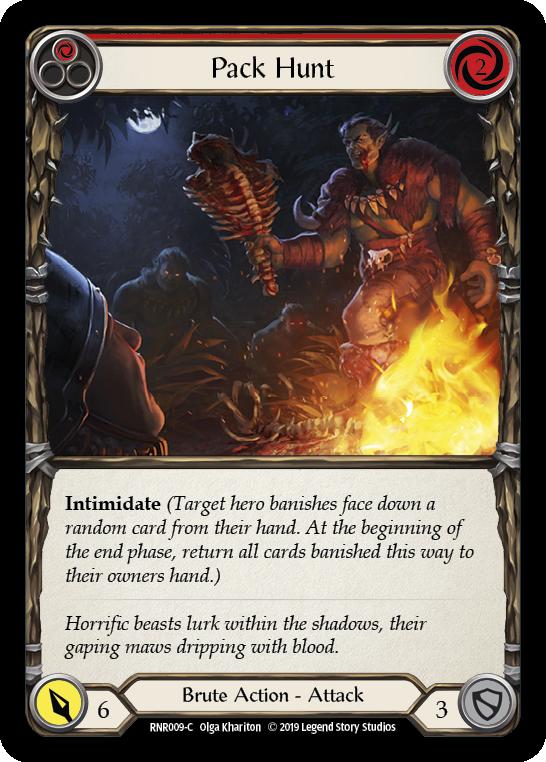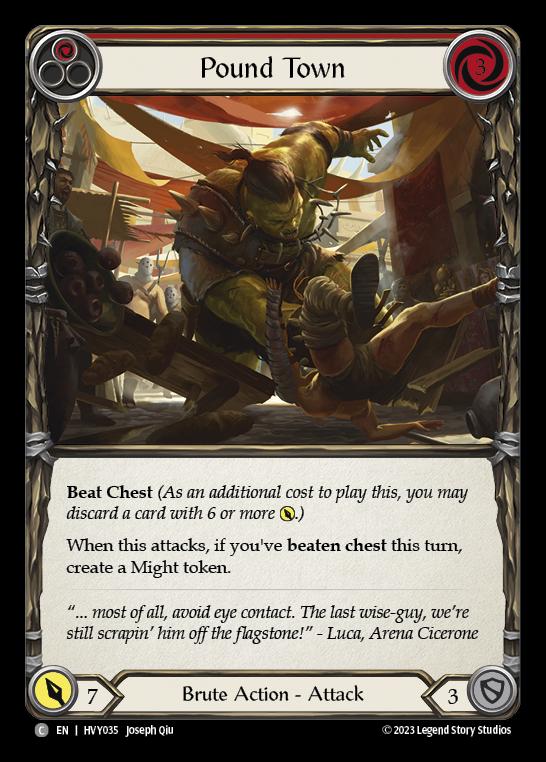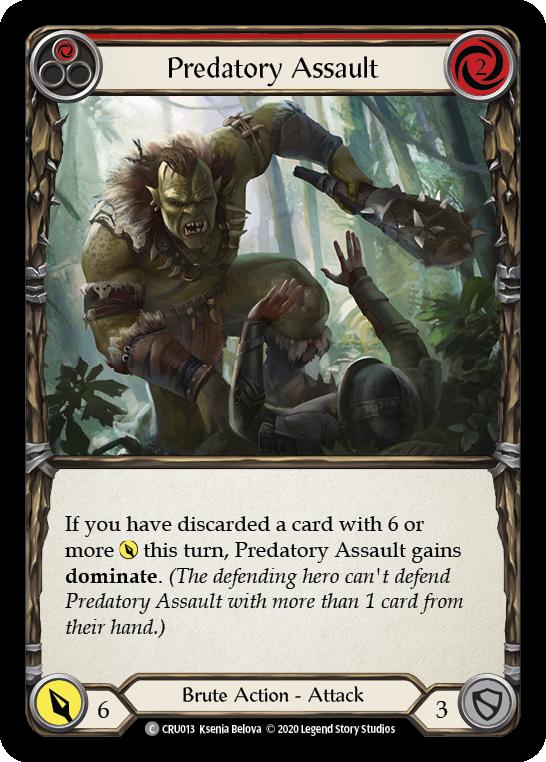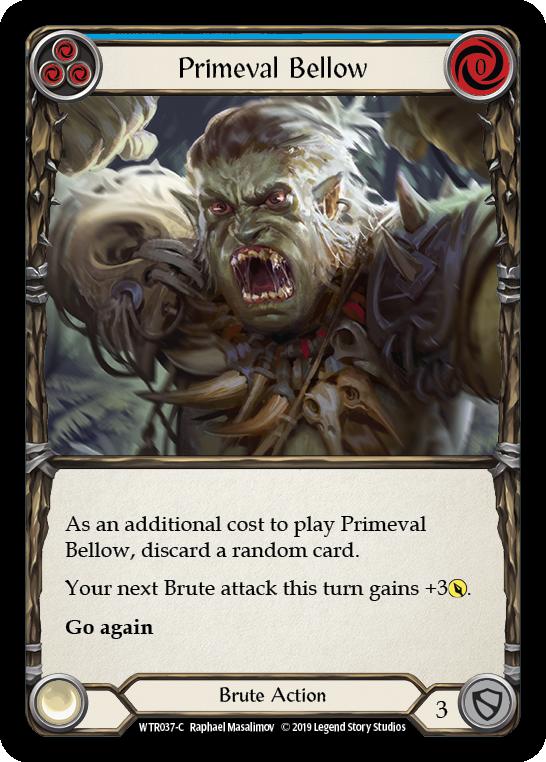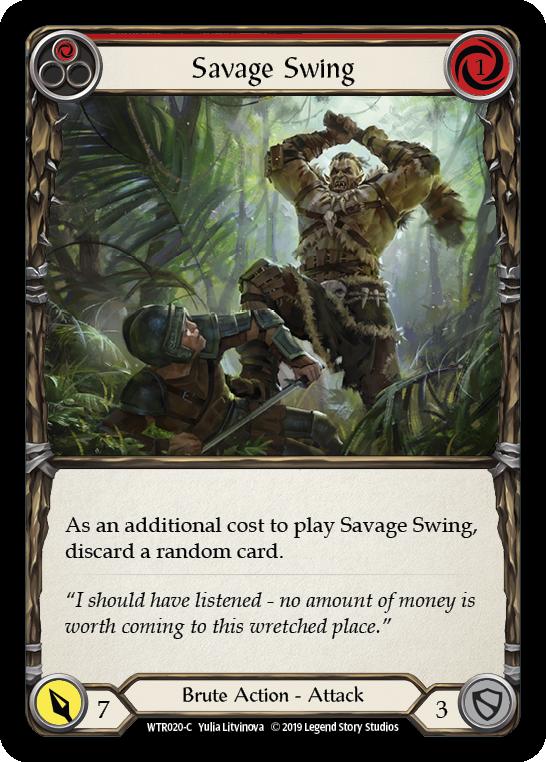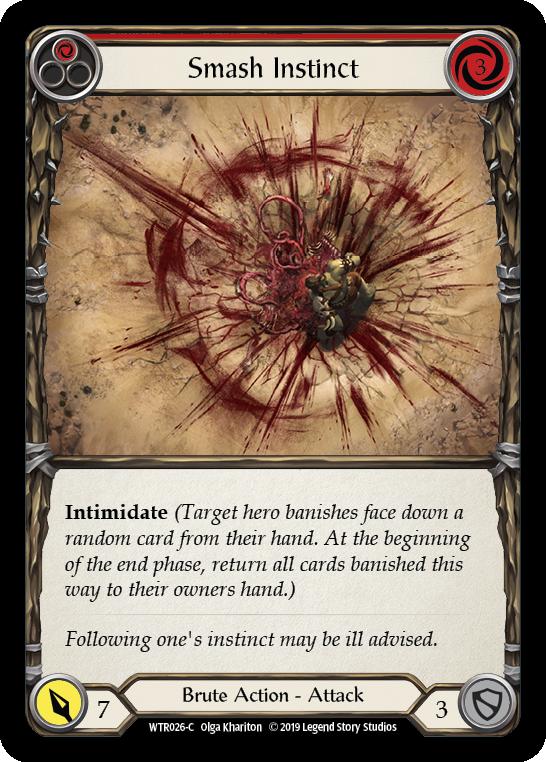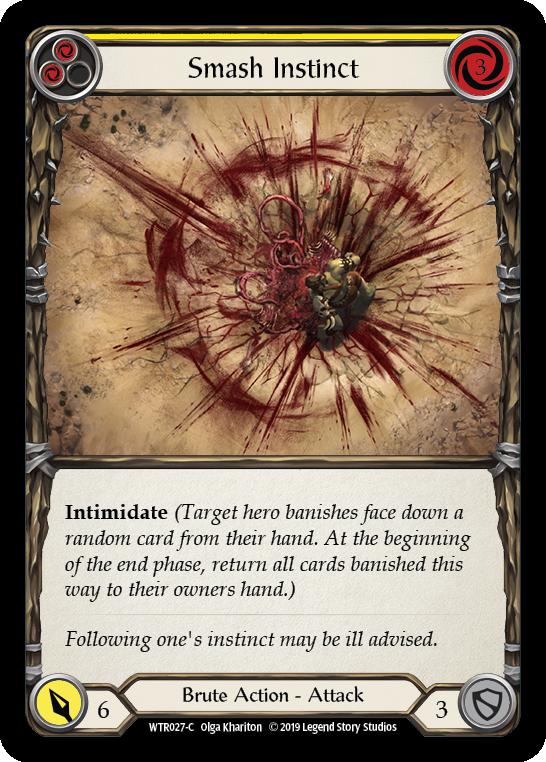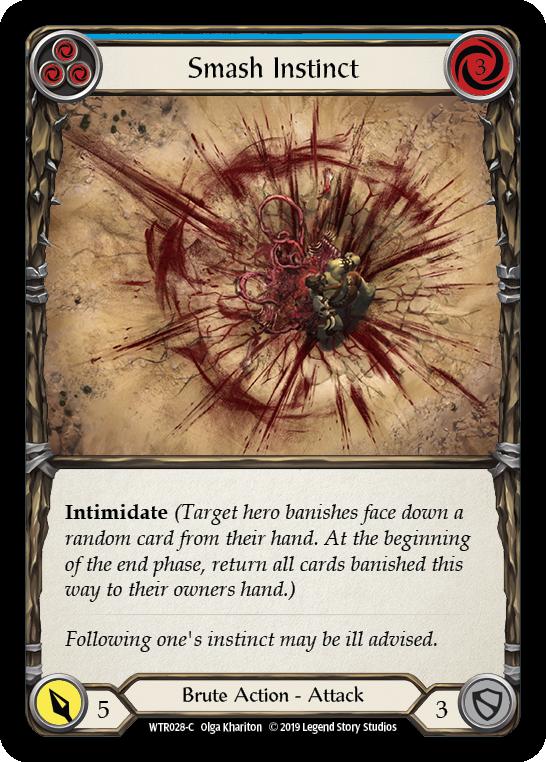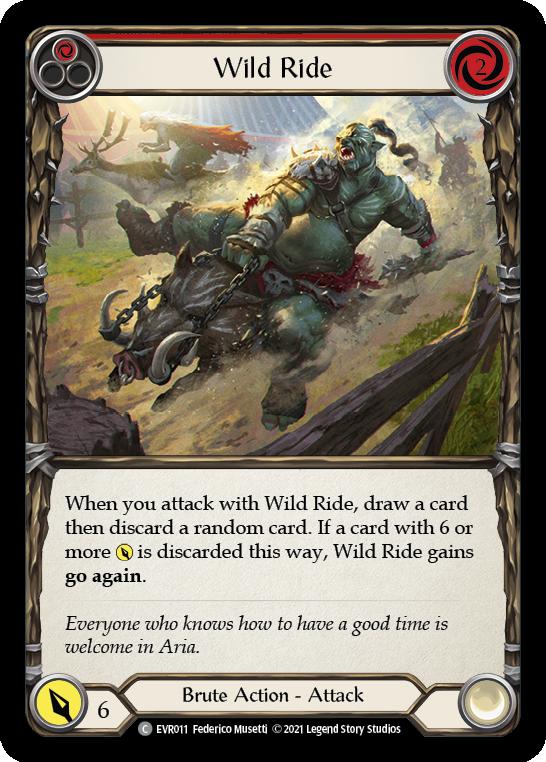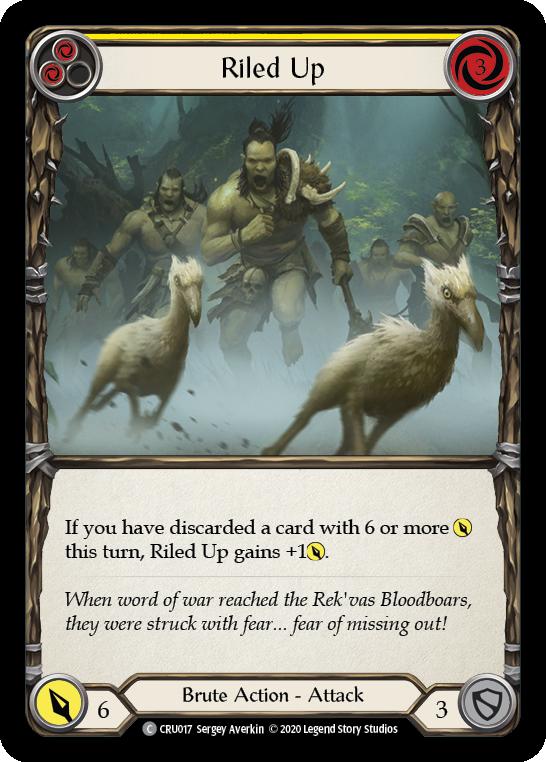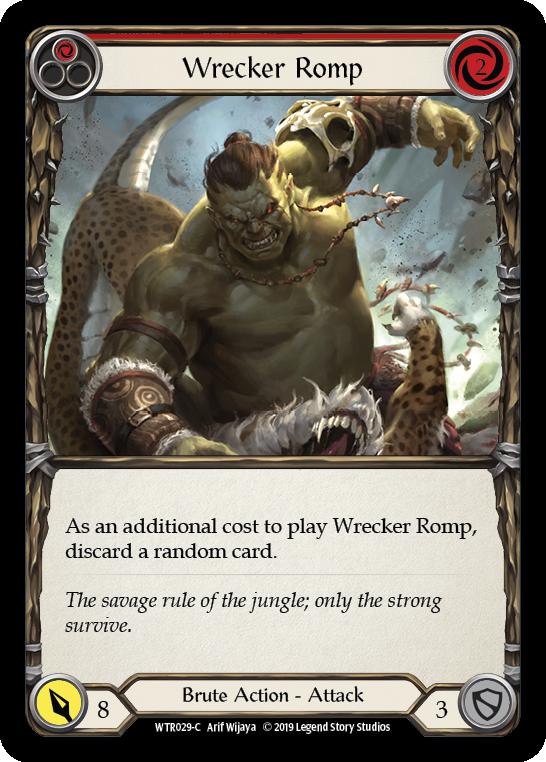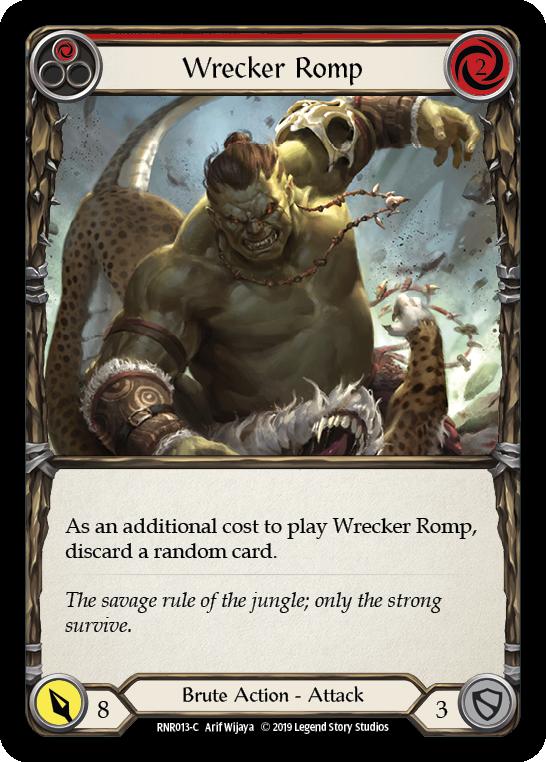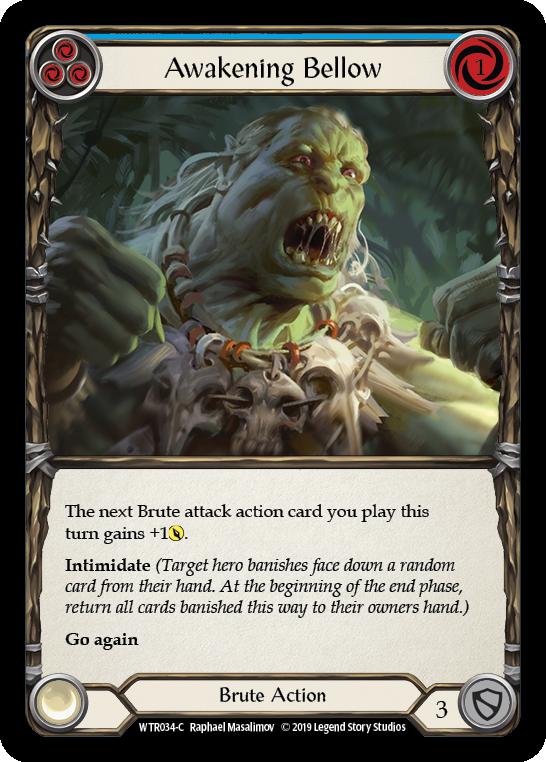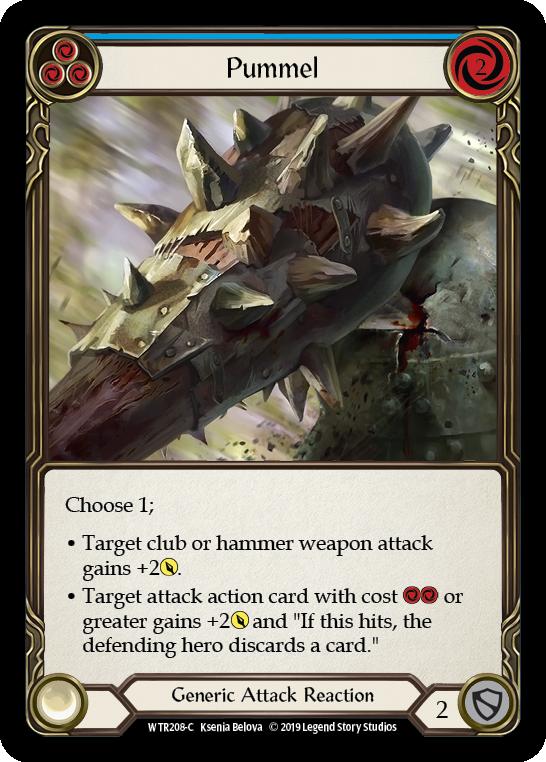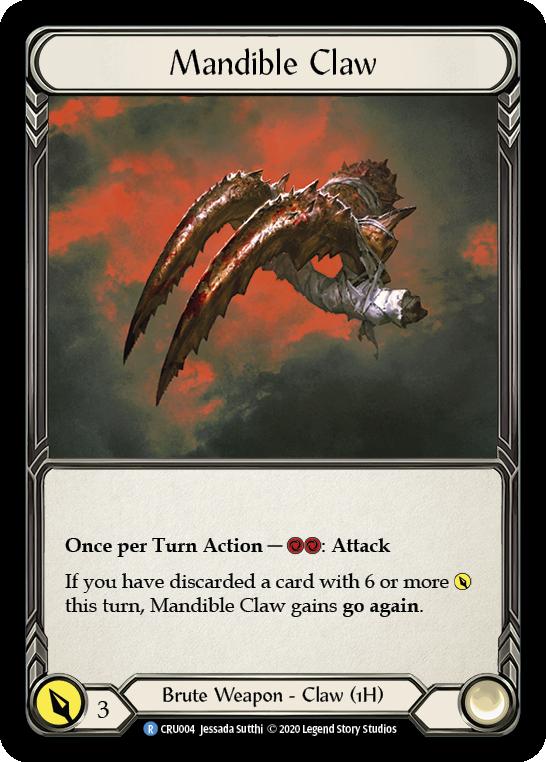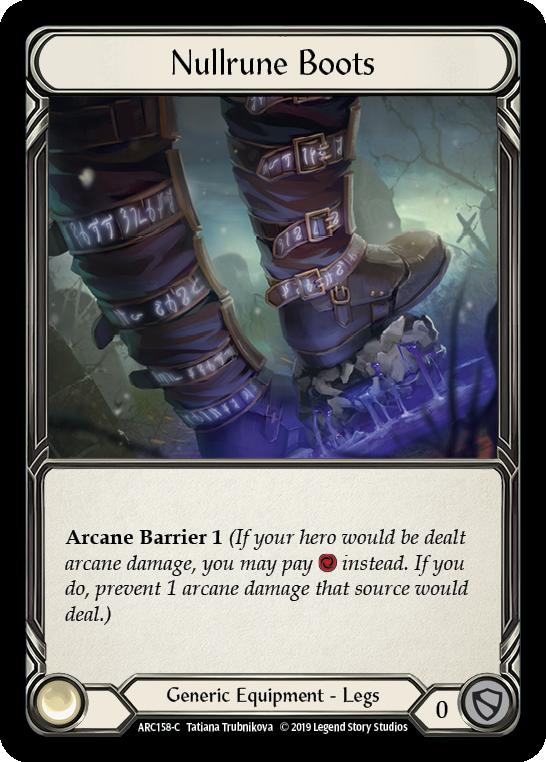Brute in Commoner – Part 2: Rhinar
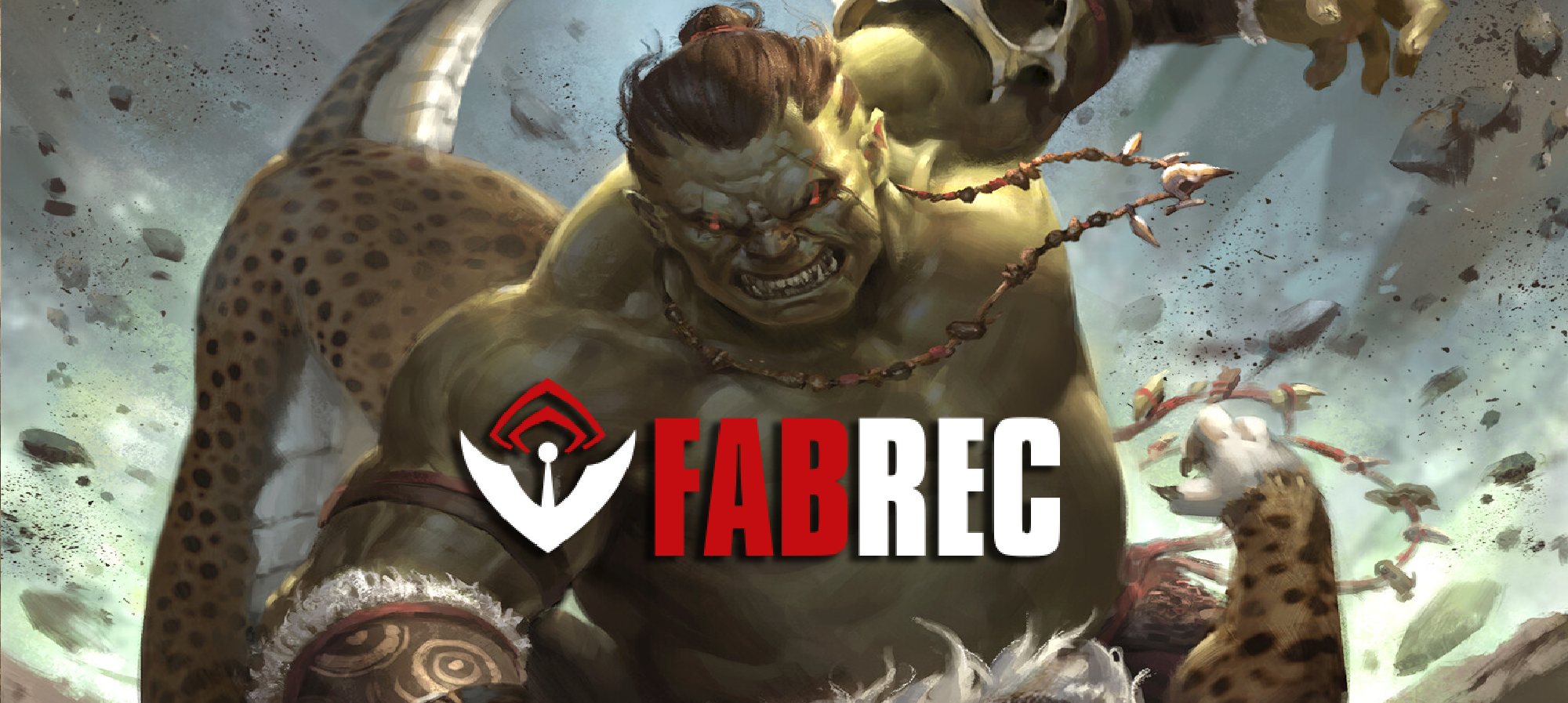
Hello and welcome back to my series on Brute in Commoner! Last time I took a big-picture, high level look at the class as a whole, and this week I’m focusing on the original Brute himself, Rhinar. There’s a lot to talk about in terms of deck construction, even though his card pool is largely quite straightforward, so let’s dive right in.
" A Smashing Good Time by Daniel Yam"
|
While your list may vary in your specific card selection, in particular your preference for yellow sixes and how many Bellow effects to run, the core game plan of the deck remains unchanged. Every yellow attack in the deck is a hit for Rhinar’s ability, and all but six cards in the entire deck block for three. Ideally, you’d be able to play a big attack, intimidating a card out of the opponent’s hand with Rhinar and then forcing two cards out to block, holding back high quality cards to block with if need be. The strength in this simple game plan is that in a world where the game state is progressing along your desired pace, it gives you ample opportunities to arsenal important cards to set up for a slightly longer turn.
Equipment & Inventory for Rhinar
Quickly touching on the equipment suite within the deck, as I mentioned last article, Brute’s available gear is very strong in terms of utility and the presence of battleworn on both Beaten Trackers and Rhinar’s specialization Monstrous Veil being a huge boon to the deck’s already solid defensive capabilities. Keep in mind that Beaten Trackers only triggers on a six being discarded at random, so it won’t work with any of the beat chest cards from Heavy Hitters. I’ve opted for the pair of Mandible Claws in the inventory alongside two pieces of Nullrune, as you’d still need the combo of Heartened Cross Strap and Goliath Gauntlet to cheat on resources while committing a card or two to blocking out arcane damage. This leaves you three slots to play around with in the sideboard, and as usual, this is purely up to your personal preference and local metagame considerations.
Bellows
The Bellows are all powerful buffs in their own right, and each fulfill slightly different roles for the deck. Awakening trades raw numbers for controlled disruption, while Primeval offers nothing but aggression in its utility, reflected in their respective buffs. However, while Primeval Bellow requires the additional cost of discarding a random card, costing zero is an upside that massively outweighs the potential downside. I’ve opted for red Bonebreakers over the original Awakening Bellow due to the various attacks that care about discarding sixes or having beaten chest during the turn as both Assault and Battery and Pound Town are templated in a way which sees any prior beat chest triggering. Beyond that, the deck’s construction greatly values beat chest as a controlled discard that can set up a “guaranteed” hit off one of the random discard attacks, leading to two intimidate triggers in a turn and a large swing in damage.
Attacks
I’ve opted for a “greatest hits” array of attacks, a lot of the original card pool from Welcome to Rathe, simply due to the good rate most of the attacks are priced at across all three colors, as well as the presence of intimidate triggers on attack. It’s perhaps easier to run down the attacks that I’m not running and explaining why.
Madcap Charger & Muscle – extremely bad rate even though they both block for three, Charger’s 5/4/3 power spread is especially embarrassing and non-synergistic with everything else in the deck
Agile/Mighty Windup – Rhinar only triggers during your action phase, so there’s little bonus in the instant speed discard besides trying to control the random discard from one of your attacks, but at that point, you’re throwing a 6+ power card away to ensure a different six gets discarded. Also doesn’t play well with Beaten Trackers due to not being random and blocks for two.
Riled Up – I’m playing the yellow because it doesn’t have the worst textbox and is a six, but the red’s rate is below what I’d want for a card that actively wants multi-attack turns to actually shine.
Smash with Big Tree – No block value.
Swing Fist, Think Later – Unconditional go again does not make up for the atrocious rate this is at, and going lower to the ground doesn’t even play well to Brute’s strengths as a class when the damage output is as pitiful.
Wage Agility/Might – Not a guaranteed successful wager that will probably backfire against certain matchups, and the beat chest cards are just simply more efficient at generating the token while still blocking for three.
That doesn’t leave a whole lot of viable attack actions in the card pool, and I’m wary of adding in generic attacks since they’re all priced at either below-par rate for Brute’s standards or only meet the standard at the expense of its block value. I’ve only included the red Wild Rides and Bare Fangs since they actually don’t lose you any card parity in hand on play, and both can be deployed off the Heartened Cross Strap and can be easily sided out with the three available slots in the inventory.
Blues
My favorite part of a deck deep dive is always the blue lineup, and it’s no different this time. Following the principle that no blue sixes exist for a non-talented Brute besides Wrecker Romp, the rest of the blues should just be filled with good blockers or utility cards that can be useful in specific scenarios. Sure, it’s painful to lose a Pummel to a random discard, but that card was going to either be the Pummel or a bad attack action anyway, so in that spot, I’d rather the opportunity cost of having access to a card like Pummel.
You may notice that besides the Wrecker Romp and Smash Instinct (the attack that is the least embarrassing to attack with on its own), the rest of the blues are all Bellows. Primeval and Bonebreaker are still fine at blue, offering a buff of three power to the next Brute attack, which makes for a good pairing with the Romping Club and the lone copy of Awakening Bellow solely exists as a concession to needing an extra blue in the deck. Intimidating on play is always a nice touch, but Bonebreaker provides the same bonus without the beat chest, so when you’re actually playing these cards during a turn, the potential upside of Bonebreaker far surpasses the safe but mediocre Awakening Bellow. I’ve split up the playset of Awakening Bellow with the one yellow Riled Up, simply due to wanting one extra attack, and as mentioned above, the vaguely relevant textbox can come up on occasion.
Conclusion on Rhinar
Overall, Rhinar rocks. There isn’t an actual red in the deck I’m reluctant to play, and the game plan is simple enough that anyone can pick up and play with room for some nuance and complexity in its lines. I consider this to be the perfect beginner Commoner deck, and is one that will continue to be good in future releases in how its playstyle seemingly aligns with the vision LSS has for the class in the future (the preemptive Berserk ban in CC and Blitz to free up design space for Brute attacks seems to indicate as much anyway).
Next time I’ll journey off the beaten path a bit as I turn my attention to Levia, and the wild direction I’ve taken her in.
Further Reading:
How to Upgrade the Rhinar Precon

